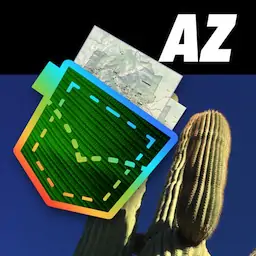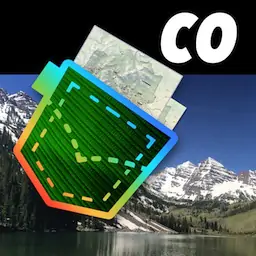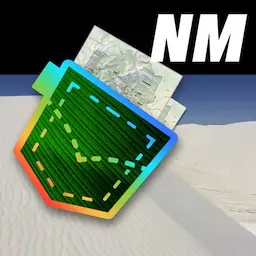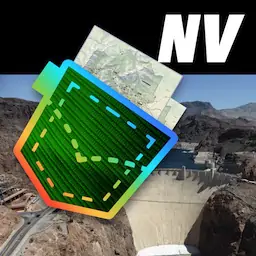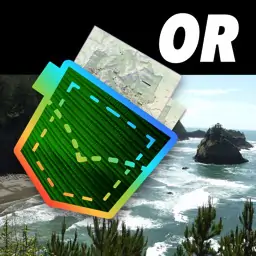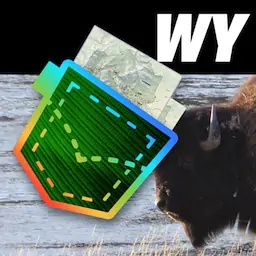UtahNHT Auto Tour Guides |
The National Historic Trail route across Utah. Published by the National Park Service (NPS).
featured in
covered parks
National Trails System
National Park Service
U.S. Department of the Interior
National Historic Trails
Auto Tour Route Interpretive Guide
Utah — Crossroads of the West
“Wagons Through Echo Canyon,”
by William Henry Jackson
Pony Express Bible photograph is courtesy of Joe
Nardone, — Pony Express History Association.
Every Pony Express rider working for Russell, Majors, and Waddell, was
issued a personal Bible to carry with them and obliged to pledge this oath:
“I, [name of rider] - do hereby swear before the great and living God that
during my engagement and while I am an employee of Russell, Majors, and
Waddell, I will under no circumstances use profane language, I will drink no
intoxicating liquors; that I will not quarrel or fight with any other employee
of the firm and that in every respect I will I conduct myself honestly,
faithful to my duties, and so direct my acts, as to win the confidence of my
employers, So help me God.”
NATIONAL HISTORIC TRAILS
AUTO TOUR ROUTE INTERPRETIVE
GUIDE
Utah — Crossroads of the West
Prepared by
National Park Service
National Trails—Intermountain Region
324 South State Street, Suite 200
Salt Lake City, Utah 84111
Telephone: 801-741-1012
www.nps.gov/cali
www.nps.gov/oreg
www.nps.gov/poex
www.nps.gov/mopi
NATIONAL PARK SERVICE
DEPARTMENT OF THE INTERIOR
September 2010
Contents
INTRODUCTION • • • • • • • • • • • • • • • • • • • • • • • • • • • • • • • • 1
A NOTE ON STATE BOUNDARIES • • • • • • • • • • • • • • • • • • • • 2
THE BIG EMPTY • • • • • • • • • • • • • • • • • • • • • • • • • • • • • • • • 3
SAGEBRUSH AND SALT FLATS • • • • • • • • • • • • • • • • • • • • • • 4
FIRST WAGONS INTO UTAH • • • • • • • • • • • • • • • • • • • • • • • • 7
‘A NIGHER ROUTE’: The Hastings Cutoff • • • • • • • • • • • • • • • 11
‘THIS IS THE PLACE’: The Mormon Pioneers • • • • • • • • • • • • •18
A HALF-WAY HOUSE ON THE CALIFORNIA TRAIL • • • • • • • • • 28
THE UTAH WAR • • • • • • • • • • • • • • • • • • • • • • • • • • • • • • • 34
‘THE FORLORNEST SPOT’: The Pony Express Trail in Utah • • • 36
THE WARPATH • • • • • • • • • • • • • • • • • • • • • • • • • • • • • • • • 43
CROSSROADS OF THE WEST• • • • • • • • • • • • • • • • • • • • • • • 47
SITES AND POINTS OF INTEREST • • • • • • • • • • • • • • • • • • • • 49
AUTO TOUR SEGMENT A: Wyoming Border To Salt Lake
City, Utah — (Hastings Cutoff Of The California, Mormon
Pioneer, and Pony Express Trails) • • • • • • • • • • • • • • • • 49
OPTIONAL BACKCOUNTRY ROUTE: East Canyon/Little
Emigration Canyon • • • • • • • • • • • • • • • • • • • • • • • • • • • 65
SALT LAKE CITY PIONEER TOUR • • • • • • • • • • • • • • • • • • 77
AUTO TOUR SEGMENT B: Salt Lake City To West Wendover,
NV • • • • • • • • • • • • • • • • • • • • • • • • • • • • • • • • • • • • • • 90
OPTIONAL BACKCOUNTRY ROUTE: Skull Valley and Hastings
Pass • • • • • • • • • • • • • • • • • • • • • • • • • • • • • • • • • • • • 95
AUTO TOUR SEGMENT C: Salt Lake City To City Of Rocks NR,
ID (Salt Lake Cutoff of the California Trail) • • • • • • • • • • 105
AUTO TOUR SEGMENT D: Pony Express Trail National Back
Country Byway • • • • • • • • • • • • • • • • • • • • • • • • • • • • • 110
For More Information • • • • • • • • • • • • • • • • • • • • • • • • • • 122
Credits • • • • • • • • • • • • • • • • • • • • • • • • • • • • • • • • • • • • 122
Auto Tour Route Interpretive Guide
Utah
INTRODUCTION
M
any of the pioneer trails and other
historic routes that are important in
our nation’s past have been designated by
Congress as National Historic Trails. While
most of the trail ruts still in existence are not
open to motorized traffic, people can drive
along modern highways that either overlie
the original route or closely parallel it. Those
modern roads are designated as Auto Tour
Routes, and they are marked with highway
signs and trail logos to help today’s travelers
follow the routes used by the pioneers who
helped to open the American West.
This interpretive publication guides visitors along the Auto Tour
Routes for the California, Mormon Pioneer, and Pony Express
National Historic Trails across Utah. Site-by-site driving directions
are included, and an overview map is located inside the back
cover. To make the tour more meaningful, this guide also provides
a historical overview of the three trails, shares the thoughts and
experiences of emigrants who followed these routes, and discusses
how the westward expansion impacted the native peoples of what is
now Utah.
Individual Auto Tour Route interpretive guides such as this one
are in preparation for each state through which the trails pass.
In addition, individual National Park Service brochures for the
California, Mormon Pioneer, and Pony Express National Historic
Trails are available at many trail-related venues, and also can be
requested from the National Trails System administrative office at
324 South State Street, Suite 200, Salt Lake City, Utah 84111. Each
brochure includes a map of the entire trail and a general overview
of trail history. Additional information about each trail also can be
found on individual trail web sites. Links are listed on the “For More
Information” page in this guide.
5
Auto Tour Route Interpretive Guide
Utah
A NOTE ON STATE BOUNDARIES
N
ational, territorial, and state boundaries across the West shifted
repeatedly throughout the overland emigration era. Mexico
ceded its holdings between the Rocky Mountains and the Pacific
Ocean to the United States in 1848, six months after the Mormons
settled near the Great Salt Lake. In 1849, Mormon leaders proposed
a State of Deseret that took in most of the ceded area, including
southern California. Congress rejected that huge “provisional state”
but in 1850 created Utah Territory, which included today’s Utah,
western Colorado, southwestern Wyoming, and most of Nevada. This
area gradually was subdivided into more territories and states through
the 1860s. The State of Utah, with its modern-day boundaries, was
admitted as the 45th state in the Union in January 1896.
Map of Deseret. Base map is courtesy of the Utah State Historical Society, but
has been modified by NPS to outline the proposed nation of Deseret.
2
Auto Tour Route Interpretive Guide
Utah
To simplify geographical descriptions in the pages that follow,
references to states and specific historical locations — for example,
Fort Bridger, Wyoming — reflect modern state boundaries.
THE BIG EMPTY
W
est of the Wasatch Range a pale sky yawns, exposing rows of
mountains like teeth in a fearsome mouth.
The Great Basin, that Big Empty between hither and yon, is a raw and
merciless land. Many 19th century emigrants, after several months
trudging from the Missouri River with ox and wagon, stopped
at its hither edge to settle near the Great Salt Lake. Many others,
gazing west into that alien expanse, wanted urgently to meet its yon
side at the Sierra Nevada as quickly as possible. Very few stopped
permanently, willingly, in the thirsty in-between.
Despite its forbidding qualities, or more likely because of them, the
Great Basin was the setting for some of the most absorbing stories
of the American West. Their plots would bloom and ripen along the
emigrant trails of Utah, in the eastern Great Basin.
The Great Salt Lake Desert west of Salt Lake City, Utah.
3
Auto Tour Route Interpretive Guide
Utah
SAGEBRUSH AND SALT FLATS
T
he Great Basin is a vast, high-elevation desert that takes in almost
200,000 square miles of southeastern Idaho, western Utah, nearly
all of Nevada, and slices of California and Oregon. Like a shallow
bowl, the Basin catches and holds water, allowing none to escape to
the Pacific. Many thousands of years ago that bowl was full of lakes,
some of immense size, but today its inward-flowing streams bleed
into a few isolated remnants of those ancient lakes — or choke and
die at river-graveyards called sinks. In places, groundwater bubbles
up into springs and expansive marshes or collects in broad, shallow
playa pools that evaporate and leave a bright crust of crystallized
salts.
A bone-dry playa or salt flat makes a superb road, smooth, flat, and
firm; but when the underlying clay is wet, a horse or ox can break
through the white crust and mire to its knees, and a wagon might sink
to its axles in the muck. Wet or dry, salt playas glare like snow in the
midday sun, burning unprotected eyes and skin. Midsummer daytime
temperatures on the Bonneville Salt Flats west of Salt Lake City can
exceed 100 ° F, and heat waves there distort the light to create surreal
illusions. Out in the salt desert, travelers on the Hastings Cutoff to
Pilot Peak and the Great Salt Desert with spring
snowmelt.
4
Auto Tour Route Interpretive Guide
Utah
California might see non-existent lakes, mountains floating on air,
distant rocks resembling lost cattle, and approaching pack trains
magnified into fantastic, writhing serpents.
But the Great Basin is not just a big, flat salt pan: it is a bowlful of
mountains. Hundreds of mountain ranges rise in roughly parallel
north-south rows, separated by broad valleys. From the air, these
ranges look like enormous swells cresting in a sagebrush sea. From
the height of a horse, they look like serious obstacles. Anyone
crossing the Basin by ox and wagon had to find a way around the
mountains. Only one natural pathway cuts through this washboard
barrier: the Humboldt River Valley of Nevada.
Salt desert and sagebrush steppe. Sun-tempered mountains the
color of steel. Heat and eye-scalding dust, turbid streams and briny
waterholes… miles and miles with no water at all. The Great Basin
is stark, yet it offers a living to those who know where and when to
look for food, and who keep an open mind about what makes a good
meal. On the Great Basin menu are grass seeds, pine nuts, berries,
cattail roots and pollen; fish and waterfowl, jackrabbits, antelope,
deer, ground squirrels and lizards (few buffalo here); and ant eggs,
caterpillars, crunchy grasshoppers, leggy Mormon crickets, and
well-seasoned brine fly larvae that wash up in windrows along some
Great Basin lake shores. Pioneers scorned many of these wild foods,
although there would be times on the road ahead when they might
gratefully eat much worse. But the native peoples of the desert could
ill afford to be so choosy.
The riverless region southwest of the Great Salt Lake, between
the Oquirrh Range of Utah and the Schell Creek Range of eastern
Nevada, is some of the harshest, most food-scarce country in
the Great Basin. It also is the ancestral homeland of the Goshute
Shoshone Indians. When they had the desert to themselves, the
Goshutes — “dry earth people” — spent most of the year scattered
across the landscape in small family groups. They ranged the country
on foot, keeping no horses that would eat up the seed-grasses the
people needed for their own survival. The Goshutes were too few
and too dispersed to form a tribe, but families gathered from time to
time to cooperate in hunts and harvests. They ate whatever the earth
5
Auto Tour Route Interpretive Guide
Utah
provided, sheltered in simple brush huts and cliff-side alcoves, and
carried few possessions. Isolated, desert-savvy, and resourceful, the
Goshutes lived like shadows on the land, in trembling balance with
nature. They had enough to survive but nothing to spare.
Although the Great Salt Lake Desert may have looked vacant, it was
fully occupied, altogether and efficiently used. The arrival in the
1840s of new people and their livestock, competing for the same
precious resources, would topple the delicate balance the Goshutes
had maintained for many centuries.
Salt desert and sagebrush with scattered waterholes — some fresh, but most
are salty — make up the natural habitat surrounding much of the Great Salt
Lake .
6
Auto Tour Route Interpretive Guide
Utah
FIRST WAGONS INTO UTAH
A
handwritten letter was all the 69 pioneers had to guide them to
California as they prepared to leave Independence, Missouri, in
May 1841. The first covered wagon train to head West had no road
to follow, no guide, no experience with long-distance overland travel
or the native people they would meet along the way — and for good
measure, they had no useful map. But before leaving home, young
John Bidwell, a 21-year-old Pennsylvania schoolteacher, had studied
some old maps belonging to a friend. Beyond the Continental Divide,
the drawings showed a huge lake, and from it two great rivers snaked
west to the Pacific Ocean. Simply find one of the rivers and follow it
to California. What could be simpler? In fact, the map’s owner (who
was not going along) suggested that the emigrants carry tools so that
they might build boats and ride the currents to the Land of Promise.
By stroke of luck, these ill-prepared pioneers soon joined up with
mountain man Thomas “Broken Hand” Fitzpatrick, who guided their
wagons over plains and mountains to Soda Springs, in today’s Idaho.
But that was the end of Fitzpatrick’s trail: from there the emigrants
were on their own. Before leaving them, the frontiersman persuaded
about half of the wagon company to follow the old trappers’ route
along the Snake and Columbia Rivers to Oregon instead of venturing
into unknown country between Soda Springs and California. Only
a few mountain men, including the great Jedediah Smith and Peter
Skene Ogden, had ever probed that region, and their opinions of it
were grim. “A Country of Starvation,” warned Smith; “truly a barren
country,” cautioned Ogden. Undaunted, on August 11, 1841, the
other thirty-four pioneers of Fitzpatrick’s party resolutely steered
their wagons southwest along the Bear River toward the Great Salt
Lake. They would find their own way to California.
This group, called the Bidwell-Bartleson Party, did send four riders
north to the Fort Hall trading post to recruit a guide from among the
fur trappers there. The returning outriders overtook the wagons 10
days later in what is today northern Utah, but they brought no guide
— nothing but second-hand information gleaned from trappers who
had only heard about the country ahead.
7
State Historical Society.
Don’t go too far south before turning
west to California, the trappers
advised, for there lay an immense
desert with no feed or water for the
livestock. And don’t turn off too far
north, either, they warned, for there
lay a maze of streams and canyons
where the travelers would wander, lost
and starving. But if the emigrants were
to turn west toward California at just
the right spot, neither too far south nor
too far north, they eventually would
strike Mary’s River (later named the
Humboldt River), which they could
follow into the heart of the Great Basin.
John Bidwell portrait Courtesy of the Utah
Auto Tour Route Interpretive Guide
Utah
The fact was no one knew but little about the country. No one had
been through to California by that route so far as we could learn.
— John Bidwell, California emigration, 1841.
1841 Route taken by Bidwell - Bartleson between South Pass and Pilot Peak.
8
Auto Tour Route Interpretive Guide
Utah
As the determined emigrants continued down the Bear River looking
for the perfect place to split off toward Mary’s River, they noticed
that the stream was growing increasingly briny. Even the nearby
grass was “shining with salt,” so the suffering draft mules and oxen
could neither feed nor drink. Adding to the torment, the August heat
magnified the landscape and made distant shrubs look like wellwatered groves of trees. In their confusion, the emigrants followed
mirages across the mud flats west of today’s Brigham City toward the
Great Salt Lake.
Thus misled, we traveled all day without water, and at midnight
found ourselves on a plain, level as a floor, incrusted with salt, and
as white as snow … This plain became softer and softer until our
poor, almost famished, animals could not pull our wagons. In fact,
we were going direct to Salt Lake and did not know it. — John
Bidwell, California emigration, 1841.
Disoriented and uncertain, they looped around, crossed their own
track, struggled through sagebrush so dense that it overturned the
lighter wagons, and blundered their way along the north end of
the lake. At last finding a source of good water (later named Tenmile Spring), the company sat in camp for over a week until their
scouts returned with news that Mary’s River was about five days’
travel ahead. Onward the emigrants toiled. East of the present-day
state border near Lucin, Utah, a month after leaving Soda Springs,
the faltering oxen belonging to pioneer Ben Kelsey moaned to a
halt. Kelsey unyoked his cattle, emptied the wagon, and loaded
belongings, his 18-year-old wife, Nancy, and their toddler daughter
onto horses. They would pack to California, driving their oxen before
them. Within a few days, Kelsey’s companions would abandon their
wagons, too.
Now it was mid-September. The Bidwell-Bartleson Party, already out
of provisions, faced a hungry two-month trek across the Great Basin
and a perilous late-season crossing of the Sierra Nevada.
The Bidwell-Bartleson wagon route around the north end of the
Great Salt Lake was abandoned until 1869, when Union Pacific laid
tracks through that area for the transcontinental railroad. Today, state
9
Auto Tour Route Interpretive Guide
Utah
highways and local roads between Snowville and Lucin approximate
the Bidwell route.
But the oncoming emigration would find other — and not always
better — ways to California.
1846 route of the Hastings Cutoff on the California Trail between South Pass
and Pilot Peak.
10
Auto Tour Route Interpretive Guide
Utah
‘A NIGHER ROUTE’: The Hastings Cutoff
T
his new cutoff from Fort Bridger to California could save
hundreds of miles, Lansford W. Hastings promised westbound
emigrants during the summer of 1846. The great Pathfinder himself,
Captain John C. Fremont, only last year blazed a direct route between
the Great Salt Lake and the Humboldt River. Hastings had just ridden
that route east from California. If anyone cared to try it, he and his
partner, James Hudspeth, would personally lead the way.
And a fine, level road it was, chimed Jim Bridger, a proprietor of a
Wyoming trading post that was conveniently located to serve travelers
on the new cutoff. Plenty of water and grass — well, except for a
40-mile dry stretch. With few wagons on the brand-new trail, dust
wouldn’t be bad, either.
of the Utah State Historical Society.
Lansford Hastings portrait, Courtesy
But not everyone thought this cutoff was a good idea. The route,
in fact, was not a road, not even a pack trail, and had never seen a
wheel. The relief was more rugged,
the desert more dangerous than
reported, and it was doubtful that
the “cutoff” was any shorter than
the established wagon trail through
Fort Hall, in today’s Idaho. James
Clyman, who had ridden the route
from California with Hastings and
Hudspeth, continued east on his
own and warned emigrants along
the way that Hastings’ new shortcut
was “verry little nearer” than the old
road through Fort Hall—and likely impassable for wagons. He said so
plainly to a California-bound friend he encountered at Fort Laramie,
Wyoming: James Reed of the Donner-Reed Party.
I told him to ‘take the regular wagon track [by way of Fort Hall,
Idaho] and never leave it — it is barely possible to get through if
you follow it — and it may be impossible if you don’t.’ Reed replied,
‘There is a nigher route, and it is of no use to take so much of a
11
Auto Tour Route Interpretive Guide
Utah
roundabout course.’ — James Clyman recounting conversation
with James Reed at Fort Laramie, 1846.
Clyman had impressive frontier credentials. He had trapped the
Green River country in the 1820s, ridden with Jedediah Smith and
Thomas Fitzpatrick, helped rediscover South Pass, explored the
Great Salt Lake in a rawhide bullboat, and crossed the continent
several times — most recently by the very cutoff now in debate. But
in the end, Reed and others thought an open letter from Hastings,
sent east by courier to recruit emigrants along the trail, was more
compelling than the advice of crusty old Clyman. Why, Hastings
was an author, had written The Emigrant’s Guide to Oregon and
California, and he and Hudspeth were waiting at Fort Bridger to pilot
them! Besides, the Donner-Reed Party was among the last groups
on the trail that summer. The travel season was growing late and
the fearsome Sierra Nevada still lay ahead. With Jim Bridger himself
vouching for it, this new shortcut was surely too good to pass up.
When the emigrants reached Bridger’s post on July 28, though, they
learned that their guides had departed eight days earlier leading a
group of mule-packers and 70 to 80 emigrant wagons. A note left by
Hastings urged late arrivals to come on and catch up. It should be easy
enough, following the tracks of slower-moving advance wagons that
were doing the hard work of breaking trail.
As the 20 wagons of the DonnerReed Party rolled out of the fort
and onto the Hastings Cutoff
on July 31, it did seem easy.
They followed the trail of the
lead wagons southwestward
across the corner of Wyoming
into Utah, over the bluffs east of
today’s I-80, and through scenic
James and Margret Reed: Courtesy of
Echo Canyon. Near the junction
the Utah State Historical Society.
of I-80 and I-84 at the modern
community of Echo, the trace turned northwest, crossed the Weber
River, and continued along the water course toward present-day
Henefer. There the river entered Weber Canyon, a narrow defile that
12
Auto Tour Route Interpretive Guide
Utah
squeezed the stream so tightly that it thrashed and screamed. Wedged
into a sagebrush near the head of the canyon fluttered a second note
from Hastings. Its message was a punch in the gut.
The lead wagons, misdirected by Hudspeth, had barely escaped
catastrophe in dangerous Weber Canyon. Do not attempt passage
by that route, the note warned. Wait here and send a rider ahead to
overtake Hastings and fetch him back. He would guide them along a
faster, safer route through the Wasatch Mountains.
Now there would be no wagon trail to follow. The men of the
Donner-Reed Party would have to blaze their own track through the
rugged wilderness. The date was August 6.
Four days later, James Reed returned to camp with more bad news.
He had overtaken Hastings near the south shore of the Great Salt
Lake. Reluctantly, Hastings had accompanied Reed only partway
back to the Weber River encampment where the others waited; he
could not abandon his lead wagons, which were about to enter the
salt desert. So, from a mountaintop east of the Great Salt Lake Valley,
Hastings had stood in his stirrups and pointed out to Reed a route
through the jumble of Wasatch peaks. And then he rode way.
With a growing sense of urgency, the Donner-Reed Party turned
from the Weber River and began grubbing trail southwestward
through a maze of brush-and-boulder-choked gulches, each more
grueling than the last. Today’s Highway 65 over Big Mountain Pass
and the Emigration Canyon Road into Salt Lake City approximate
their route. Up and down mountainsides, crossing and re-crossing
streams, whacking through willows growing thick as grass, chopping,
shoveling, prying, pushing … many days they gained only two or
three miles of trail after hours of back-breaking work. Along the way,
another emigrant family out of Fort Bridger overtook and joined
them, bringing the Donner-Reed Party to a total of 23 wagons and 87
souls.
Finally the travelers dropped into Emigration Canyon, one of the
worst of the Wasatch drainages, strangled with underbrush, wagons
pitching over 18 deep creek crossings, passage growing tighter,
13
Auto Tour Route Interpretive Guide
Utah
tighter, tighter until, at the very gate of the Salt Lake Valley, they found
themselves at a dead end, blocked by heavy brush and a limestone
abutment. Unable to summon the strength to punch through, the
emigrants wheeled left and drove their wagons one by one directly up
the steep slope of the ravine to an eminence that still bears the name
Donner Hill.
The last wagon lurched out of Emigration Canyon into the dry air of
the Great Basin on August 22. Altogether, the delay at the Weber River
plus the 36-mile crawl through the mountains to the Salt Lake Valley
— a distance that should typically take three to four days by ox and
wagon — had cost the Donner-Reed Party 17 precious days.
We at last came within one mile of Salt Lake Valley, when we were
compelled to pass over a hill so steep that from ten to twelve yoke of
oxen were necessary to draw each wagon to the summit. From this
height we beheld the Great Salt Lake, and the extensive plains by
which it is surrounded. It gave us great courage; for we thought we
were going to have good roads through a fertile country ….
— Adult reminiscence of John Breen, 14-year-old member of
the Donner-Reed Party.
Pilot Peak, in the early Spring, from the west side of Hastings Pass in the
Cedar Mountains and the Great Salt Desert in the foreground.
14
Auto Tour Route Interpretive Guide
Utah
Continuing west across the Salt Lake Valley, the emigrants merged
two days later with the tracks of Hastings’s lead wagons. But the
relief they had felt since cresting Donner Hill soon was shattered at
a waterhole later named, ironically, Hope Wells (at today’s Iosepa in
Skull Valley). There on August 28, the Donner-Reed Party discovered
a third and final message from Lansford W. Hastings, note-writer
extraordinaire.
The paper lay in scattered scraps, picked apart, perhaps, by ravens.
Stunned, the emigrants wordlessly bent to collect and piece together
the message: 2 days — 2 nights — hard driving — cross — desert —
reach water.
What! This meant that the dry crossing must be much longer than
40 miles — maybe twice that span! (Later emigrants measured the
distance at over 80 miles.) There was nothing to do but move on.
The group paused at one last brackish waterhole, Redlum Spring,
clambered over Hastings Pass through the Cedar Mountains, and
followed the tracks of the lead wagons over the rocky ribs of the
Grayback Hills. Now they entered the salt desert.
Many pioneers along the California Trail commented that the Great Salt
Lake Desert was the most desolate place they had ever seen. Photograph is
courtesy of the Utah State Historical Society.
15
Auto Tour Route Interpretive Guide
Utah
& we had to go through a long drive of 40 miles With out water or
grass Hastings said it was 40 but I think it was 80 miles We traveld
a day and night & a nother day….we laid down on the ground we
spred one shawl down we laid doun on it and spred another over us
and then put the [pet] dogs on top it was the couldes night you most
ever saw the wind blew and if it haden bin for the dogs we would
have Frosen — Virginia Reed, 13-year-old member of DonnerReed Party, letter dated May 16, 1847.
Out on the glaring salt flats, the sun broiled people and livestock from
above and radiant heat roasted them from below. At night, icy winds
rattled the wagon covers and slapped through thin clothing. Thirsty
cattle collapsed and never rose, and the slower wagons dropped
behind. In the extreme heat, mirages of grassy lakeshores taunted the
travelers. On the third day in the salt desert, the desperate emigrants
unyoked their suffering oxen to drive them ahead to the next known
water at the base of Pilot Peak. Some animals, mad with thirst,
stampeded into the desert. On the sixth day of the dry crossing, the
last of the scattered emigrants reeled into camp to join the others at
the Pilot Peak waterhole, now called Donner Springs.
In the 1940s, historians photographed the remains of emigrant wagons that
often became mired in the soft sands and soils of the Great Salt Lake Desert.
Photograph is courtesy of the Utah State Historical Society.
16
Auto Tour Route Interpretive Guide
Utah
There the group spent a week recovering from the frightful ordeal
and searching for missing cattle. Two Goshute men approached
camp and with hand-motions made known that they had found some
lost livestock; but the emigrants feared it was a trick and hurried
the Indians away. Many of the missing animals never were found.
Altogether the brutal crossing had cost 36 oxen, along with two
wagons ruined by the drying effects of salt and sun and two more
abandoned for lack of draft animals to pull them.
In fact, it was impossible to find cattle on those plains, as the
mirage, when the sun shone, would make every object the size of
a man’s hat look as large as an ox, at the distance of a mile or
more; so one could ramble all day from one of these delusions to
another, till he became almost heart-broken from disappointment,
and famished from thirst. — Adult reminiscence of John Breen,
14-year-old member of the Donner-Reed Party.
To conserve the strength of their remaining oxen, the emigrants were
forced to leave many cherished possessions behind in the desert.
When instructed by her parents to forsake her belongings, eightyear-old Patty Reed secretly tucked a tiny wooden doll, a lock of her
beloved grandmother’s hair, and several other small mementos into
her clothing. Dolly, especially, would comfort her in the months to
come.
The morning of September 10, 1846, with an overnight dusting of
snow frosting nearby Pilot Peak, the Donner-Reed Party broke camp
and rolled toward Nevada.
For riveting first-person accounts of Hastings’s lead companies
down the Weber River and across the Great Salt Lake Desert, see
“From St. Louis to Sutter’s Fort, 1846” by Heinrich Lienhard and
“What I Saw in California” by Edwin Bryant.
17
Auto Tour Route Interpretive Guide
Utah
‘THIS IS THE PLACE’: The Mormon Pioneers
L
urid accounts of certain events that had occurred in the Sierra
Nevada over the past winter were already circulating among the
California newspapers as the first Mormon wagons followed the
Donner-Reed ruts into Echo Canyon the summer of 1847.
It was mid-July and the Latter-day Saints’ destination, the Great Salt
Lake Valley, lay only 40 miles ahead. Although this party of about 145
vanguard pioneers (including three women and two children) was
in no danger of being trapped by mountain blizzards, other worries
dogged them. The company’s head and heart, Brigham Young, lay
wracked with pain and fever in a sick-wagon that lagged miles behind
the two forward wagon groups. More critically, the settlers were
arriving in the valley very late in the planting season without enough
provisions to see them through the approaching winter. Finally, at
least 1,500 more pioneers, mostly families, even now were on their
way from Winter Quarters (Omaha). They, too, would need food and
shelter to survive the first winter in their new home.
Echo Canyon near Echo, Utah.
18
Auto Tour Route Interpretive Guide
Utah
And survive there they would, come what may, for they were done
with fleeing. The Latter-day Saints first had been violently expelled
from Missouri in 1838. Their beloved founder and prophet Joseph
Smith was murdered by a mob in 1844, and two years later antiMormon vigilantes drove his followers out of Nauvoo, Illinois, their
settlement on the Mississippi River — drove them, homeless, onto the
prairie.
Never again. The Great Basin belonged to Mexico, but the land was
not settled. Remote and barren, the Basin had no known resources
of particular value; nobody would come soon to wrest it from the
Mormons — and when they did come, the Latter-day Saints would
be ready. The Basin would be their final and permanent refuge, the
Rocky Mountains their line in the sand.
Now their destination lay just ahead, and the red rock gateway into
the Wasatch Mountains was like nothing they had experienced
along the trail so far. William Clayton, a chronicler for the company,
thought it “seemed strange that a road could ever have been made”
through the narrow confines of Echo Canyon. Echo Creek burrowed
between steep banks that forced crossing wagons to plunge sharply
“Wagons Thro


